#Church of Our Lady of Conception
Text

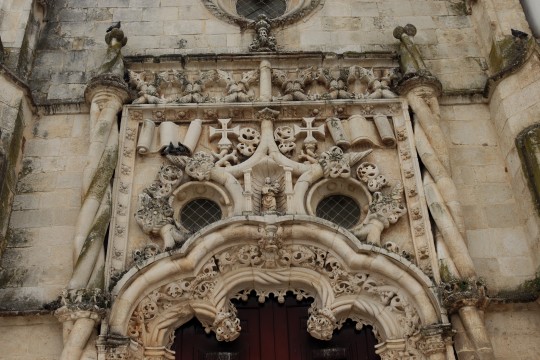


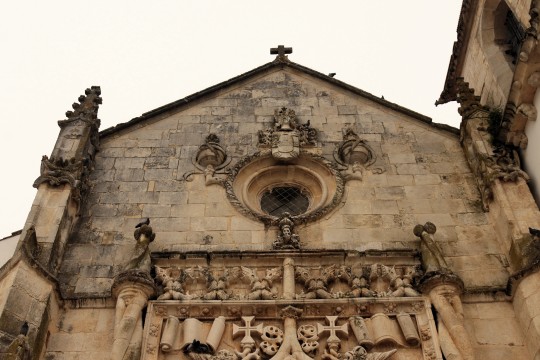

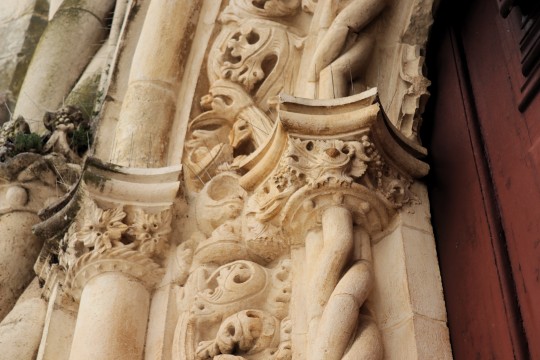

The amazing Manueline facade of the Parish Church of Golegã (aka Church of Our Lady of Conception).
This glamorous facade is part of a campaign from the first quarter of the XVI Century, but the church itself already existed since the XIV, and it's structure is clearly Gothic, not Manueline - the interior of this temple has very little to do with the iconography and aesthetic of the reign of Manuel I of Portugal (1495 - 1521)
Some incompetent scholars and academics tend say that the Manueline is no more than a late-Gothic, but, technically speaking, that is 100 pc incorrect. Actually, we should not even use the terms "Gothic" and "Manueline", since they were not used back in the day - instead, we could and should use the names "French Style" (Gothic) and "Portuguese Style" (Manueline). This facade is a wonderful example of the Portuguese Style.
#Golegã#Igreja Matriz da Golegã#Parish Church of Golegã#Igreja de Nossa Senhora da Conceição#Church of Our Lady of Conception#Manueline Architecture#Arquitetura Manuelina#Lezíria do Tejo#Ribatejo#Lisboa e Vale do Tejo#Portugal#Original photos#photography#photographers on tumblr
35 notes
·
View notes
Text

#catholic#catholicism#christianity#immaculate conception#immacolata concezione#mass#church#jesus christ#blessed virgin mary#our lady#new orleans
3 notes
·
View notes
Text
how can you be so controversial and yet so brave
(reposted from Twitter)
Hey so, have I ever told you about the time I was at an interfaith event (my rabbi, who was on the panel, didn't want to be the only Jew there), and there was a panel with representatives of 7 different traditions, from Baha'i to Zoroastrian?
The setup was each panelist got asked the same question by the moderator, had 3 minutes to respond, and then they moved on to the next panelist.
The Christian dude talked for 8 minutes and kept waving off the poor, flustered, terminally polite Unitarian moderator.
The next panelist was a Hindu lady, who just said drily, "I'll try to keep my answer to under a minute so everyone else still has a chance to answer." (I, incidentally, am at a table with I think the only other non-Christian audience members, a handful of Muslims and a Zorastrian.)
So then we get to the audience questions part. No one's asking any questions, so finally I decide to get things rolling, and raise my hand and the very polite moderator comes over and gives me the mic.
I briefly explain Stendahl's concept of "holy envy" and ask what each of theirs is.
(If you're not familiar, Stendahl had 3 tenets for learning about other traditions, and one was leave room for "holy envy," being able to say, I am happy in my tradition and don't desire to convert, but this is something about another tradition that I admire and wish we had.)
The answers were lovely. My rabbi said she admired the Buddhist comfort with silence and wished we could learn to have that spaciousness in our practice. The Hindu said she admired the Jewish and Muslim commitment to social justice & changing, rather than accepting, the status quo.
The Christian dude said he envied that everyone else on the panel had the opportunity to newly accept Jesus.
I shit you not.
Dead silence. The Buddhist and Baha'i panelists are resolutely holding poker faces. The Hindu lady has placed her hands on the table and folded them and seems to be holding them very tightly. Over on the middle eastern end of the table, the rabbi, the imam, and the Zoroastrian lady are all leaning away from the Christian at identical angles with identical expressions of disgust. The terminally polite Unitarian moderator is literally wringing his hands in distress.
A Christian lady at the table next to me, somehow unable to pick up on the emotional currents in the room, sighs happily and says to her fellow church lady, "What a beautiful answer."
anyway I love my rabbi to death and would do anything for her
except attend another interfaith event
22K notes
·
View notes
Text
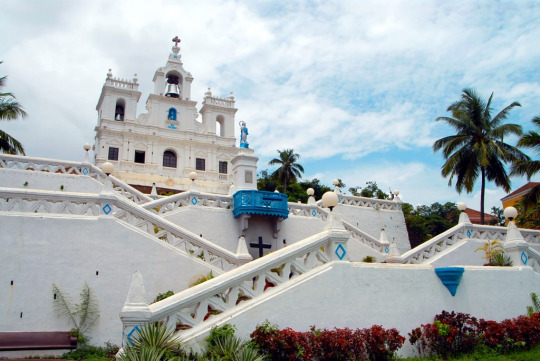
0 notes
Text
Officially, in the western church, today isn't the Annunciation. This is Holy Monday, and the Annunciation is moved to avoid coinciding with Holy Week. I think if it were during the Triduum I would appreciate this, making space to hold both days separately. But it's Monday, and they can't stop me from thinking about Mary during Holy Week. March 25 is a traditional date of both Jesus's death and conception, as well as the Creation—a spring equinox of redemption. Holding space for all these things has always been appropriate. Birth and death coexist; Jesus's beginnings were the beginnings of his mortality. The angel announces the future, and whoever listens must live through all of it.
What did it mean for Mary to say yes to this? We laugh at the "Mary did you know?" lyrics, because we know she knew. But she also didn't have to know the details of God's plan to say yes to what every parent says yes to—witnessing. Acknowledging the bringing into the world of a frail being, perhaps giving your body to make this happen, praying that you will die before they do but knowing that is not promised. And every parent living under a violent state knows what it is to hope it's not your kid that's next (whether you're a Black parent teaching your child how to talk to cops, or a Palestinian parent hiding in rubble, or a Jewish parent under Roman occupation who's seen the crosses outside the city walls).
Do you think, at the foot of the cross, Mary thought of her response, "Let it be unto me according to your word"? After bearing that Word inside her, teaching him how to walk, waiting for God to change his mind, to reveal a ram caught in a thicket so her son wouldn't have to die after all, do you think she remembered her teenage self, magnifying the Lord? "The Almighty has done great things for me"—and to me. Great as in too big to look at all at once, bloodstained things. The power of the Most High is overshadowing her—the shadow of the cross—his flesh broken, and someone (including her perhaps) will take him down and wash him for burial.
What does it mean to hold space for that day when an angel tore into her life, breaking it open for God—during Holy Week? If we desire a feast, we should wait until Easter, I agree. But today I honor a lady of sorrows—I desire an acknowledgement of the violence of agreeing to live and love and create when it will be torn away. The story never ends there, but we must live through this week (and whatever weeks of our lives hold these things) saying yes, witnessing. Judas quit before the miracle happened—he couldn't witness death so he didn't witness the life (on this earth). Mary kept saying yes, even at the end.
We can never know everything we are saying yes to when we surrender to God. She knew in one sense, yes, but no one knows what it's like to lose a son until it happens. And no one but her knows what it's like to be the Mother of God. We already know what God wants us to do, but we don't know until it happens how much it hurts—and what the dawn will bring. What swords will pierce us, what promises will be kept.
When we say the Magnificat, we usually add a Gloria at the end—Mary did not have those words (the Trinity would not be formulated for another couple hundred years), but we have them. When we sing her song, we hold space for the ways we see God exist, and she saw those ways intimately. She held the Son and was surrounded by the Spirit, and now the Father holds her. As we live through Holy Week every year, every year she says yes. God's love continues unfolding. As it was in the beginning, is now, and will be forever. Amen.
Your assigned reading for today (should you choose to accept it) is @tomatobird-blog 's comic "Thirty Years." A blessed Holy Monday (and Annunciation) to you all.
#i'm not catholic. sorry for leaving out what i'm sure all of u catholics would add#also to clarify i am not making a statement about 'when life begins' re: conception#life is always beginning and ending. jesus's conception is a feast because of the annunciation#not as a scientific or theological statement about fetuses#christianity makes space for fluid boundaries around life and death and I entrust that knowledge to god#my posts
87 notes
·
View notes
Text

Our Lady of Lourdes
Feast Day: February 11
Patron saint of bodily ills
On February 11th, 1858 Our Lady appeared to St. Bernadette in the cave of Massabielle, Lourdes, France. This began a series of apparitions. During the vision on the 25th of March she told Bernadette, “I am the Immaculate Conception.” Lourdes is one of the most frequented Marian Shrines in the world. It is known as a place of healing, with over 60 miraculous cures that have been recognized by church authorities.
Prints, plaques & holy cards available for purchase here: (website)
103 notes
·
View notes
Text
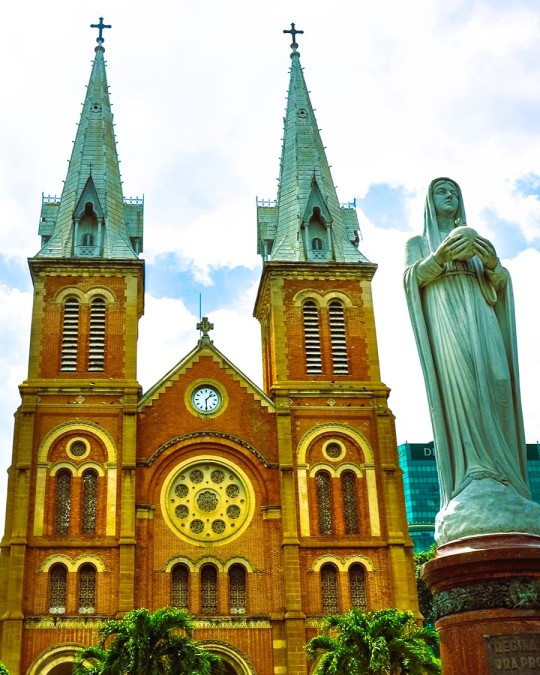
Saigon Notre-Dame Cathedral in Ho Chi Minh city: Notre-Dame Cathedral Basilica of Saigon, officially Cathedral Basilica of Our Lady of The Immaculate Conception is a cathedral located in the downtown of Ho Chi Minh City, Vietnam. Established by French colonists who initially named it the Church of Saigon, the cathedral was constructed between 1863 and 1880. Wikipedia
60 notes
·
View notes
Text
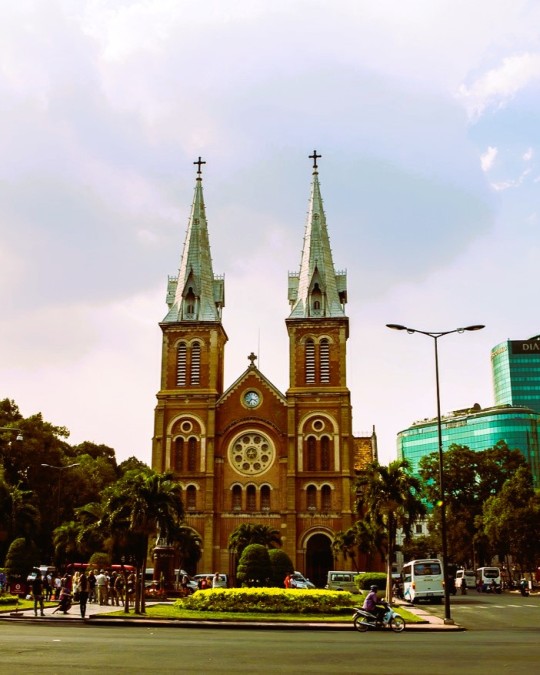
Notre Dame Cathedral of Saigon, Ho Chi Minh City, Vietnam: Notre-Dame Cathedral Basilica of Saigon, officially Cathedral Basilica of Our Lady of The Immaculate Conception is a cathedral located in the downtown of Ho Chi Minh City, Vietnam. Established by French colonists who initially named it the Church of Saigon, the cathedral was constructed between 1863 and 1880. Wikipedia
61 notes
·
View notes
Text
seventeen as mean girls, a concept
i just think seventeen has enough flair and drama to be pulling off the entire cast of the mean girls movie
BSS as the plastics
seungkwan: regina george. he has all the flair and he wants all the drama. that’s HIS burn book! he fits the description perfectly, since he’s fabulous but evil.
“get in loser. we’re going shopping.”
also the idea that seungkwan would be the person to
“you can take that fake apology, and shove it right up your hairy—“ [gets hit by a bus]
it just fits
hoshi: gretchen. his dad invented toaster strudel. tiger flavor. doesn’t even have to make sense bc he’s so rich. hoshi’s hair is so big bc it’s full of secrets
“gretchen, stop trying to make horanghae fetch happen. it’s not going to happen!”
deekay: karen. who else would hold their boobs and tell the weather??? *holds* it’s sunny. and it works every time. it’s like he has espn or something
“do you wanna do something fun? do you wanna go to taco bell?”
honestly cady would probably be dino, but the possibly of vernon being cady is just too funny to pass up.
vernon: im from africa
deekay: so if ur from africa… then why are u white
hoshi: oh my god dk… u can’t just ask people why they’re white
vernon: cady. a very funny twist on the new girl from africa. like wdym you don’t wear a whole zombie bride costume to the slutty halloween party?
the only thing historically accurate about dino being cady would be the beef between her and regina (seungkwan), but that’s just semantics
(plus the comedic value of having vernon as cady far outweighs the realistic plot benefits of dino as cady)
jeonghan: regina’s mom. “you’re doing great sweetie!” like who else would encourage all of seungkwan’s bad habits so naturally? just one camcorder video at a time… also gets his tits chewed off by a chihuahua #rip
joshua: aaron samuels. absolutely heartthrob. aaron literally is just smart and sporty but also lives with his mom and spends most of his time helping her at home. this is literally just josh. our fav church oppa
jun: janis. just the chic cool vibes. just like a very cute and lovely janis. also lesbian
mingyu: damian. too gay to function? yeah, that’s him. he will never defeat the gay allegations. and he wants his pink shirt back!!! he wants his pink shirt back!!!!!!
seungcheol: glen coco. just received 4 candy canes from santa!damian (mingyu) for doing absolutely nothing. you go glen coco!
also seungcheol: ms. norbury — but only because he would probably escalate the situation instead of diffusing it.
woozi: mr. duvall (the principal) bc his main trait is having a crush on ms. norbury and being anti-slut/whore-shaming. also has carpal tunnel syndrome??? so on-brand
-
more but just for shits and giggles:
also mingyu: jason. bc ofc he and gretchen (hoshi) would have a rocky relationship
mingyu: is your muffin buttered?
vernon: what
mingyu: would u like us to assign someone that will butter your biscuit
vernon: my what.
seungkwan: is he bothering you? mingyu why are you such a skeez?
hoshi: you were supposed to call me last night
bc the mingyu x hoshi beef will still continue into the mean girls universe
minghao as the lady who tells regina (seungkwan) her dress doesn’t fit and she needs to go to a different store → “u should try sears☺️”
wonwoo as regina’s dad that comes out only once and it’s him crying at regina’s halloween costume
dino as the bus driver that hits regina george (seungkwan)
-
everything about this to me is so funny
#daegutowns#svt as mean girls#seungkwan is regina george#dk is karen#hoshi is gretchen#everything about this is insane#svt mean girls au#svt crack
62 notes
·
View notes
Text
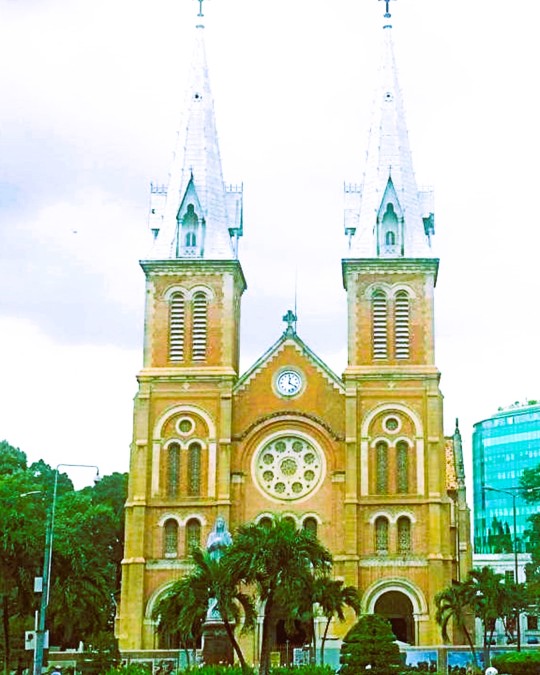
Notre-Dame Cathedral Basilica of Saigon, Ho Chi Minh City, Vietnam: Notre-Dame Cathedral Basilica of Saigon, officially Cathedral Basilica of Our Lady of The Immaculate Conception is a cathedral located in the downtown of Ho Chi Minh City, Vietnam. Established by French colonists who initially named it the Church of Saigon, the cathedral was constructed between 1863 and 1880. Wikipedia
40 notes
·
View notes
Text


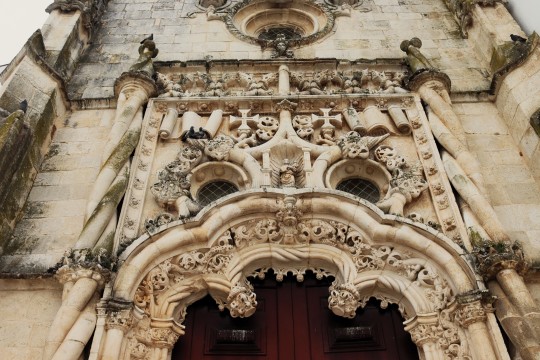

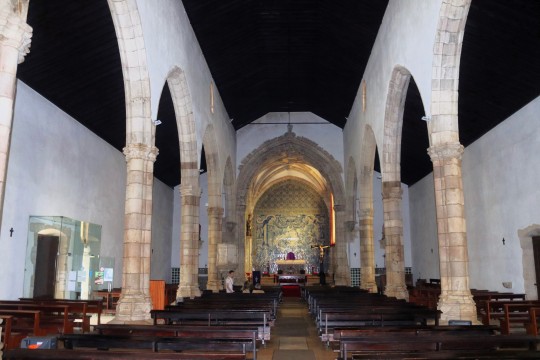




The Parish Church of Golegã (also known as Church of Our Lady of Conception): nine outtakes.
#Igreja Matriz da Golegã#Parish Church of Golegã#Church of Our Lady of Conception#Igreja de Nossa Senhora da Conceição#Golegã#Ribatejo#Lisboa e Vale do Tejo#Lezíria do Tejo#Portugal#Original photos#photography#photographers on tumblr
26 notes
·
View notes
Note
What was women's position in the Byzantine Empire? I haven't searched that much, but it seems like her position wasn't any different from Ancient Greece, where they were expected to be modest, silent and it was generally preferable not to be heard (at least, women from aristocratic families).
Well you won’t find easily a medieval state which did not want women to be modest and quiet.
In spite of that, no that’s not true. The place of the woman in the society improved considerably in Byzantine times compared to the Classical era. As a sidenote, perhaps we should not generalize about Classical Greece either, especially when we apply the reality of Athens to all the Greek world without enough evidence that this is historically accurate, at a time when Athens was extremely obsessed with ¨male perfection¨.
Based on our view of things nowadays, it might seem counterintuitive, however Christianity played a huge role in this improvement. You see, the Bible through its scriptures and also the very example of Virgin Mary, whom the Byzantines (and later the Modern Greeks too) worshipped almost equally to Christ, as well as the church’s acknowledgement and veneration of women martyrs indiscriminately from men martyrs, made it clear that women were spiritually equally capable of achieving “théosis”, meaning resemble the image of God, in other words; sainthood. It was thus deemed important that women would be able to read and study the scriptures. As a result the Byzantine empire had the highest literacy rate of women in the Middle Ages.
Intercepting for those who might wonder: "But the Ancient Greek religion had gods and goddesses alike, so why wouldn't that improve the social status of women?". The answer is because in the Ancient Greek religion there was no concept of théosis, meaning any human's strive to achieve a moral perfection to resemble the image of God. The dynamics of gods and godesses were separate from those of the people, where women were left to be evaluated by and versus men alone.
Women were nowhere as confined as the women of classical Greece. Of course they should be good wives and mothers catering to their household first and foremost but they could participate in social events, festivals, go shopping, lather in the baths and have fun like men did. As wives, their status was also better, as according to Christianity all god-fearing men were supposed to be loyal to their wives and have no concubines. So, if a man really had no intention to be faithful at all, neither to his wife nor to the Christian teachings, he at least did it discreetly, and if he did not do even that, then he did not escape the judgement of the society. Divorce was hard for either spouse to ask, of course waaay more for women, but for example Justinian enforced an iconic law that if a couple wanted to take a divorce then BOTH spouses should go to monasteries and be celibate for life lol So you know, be cruel, but at least be indiscriminately cruel! 😂
Financially, dowries and inheritance remained a woman’s property after marriage unlike in classical times. If the husband died, it was the widow’s choice whether she would marry again or not and she was in charge of her children on her own whereas in classical times women had to marry their husband’s closest relative (to “protect” them and the property that had now passed on their own family). So, really no contest there. Women owned and ran businesses and signed contracts. They were employed in a wide range of professions.
As for the aristocrats, they had it much better than classical aristocrats. They did not work like lower class women, obviously, so they filled all that extra time by being pampered by their servants (female and male, sometimes eunuchs), who were usually exclusive to them. Depending on the lady’s interests, the servants would keep her entertained by playing music, reading to her, gossiping, grooming her etc Some women hired teachers to improve on their education on their own accord. Wives of important men were usually involved in political and diplomatic affairs and they were very interested in such matters. Educated women could be doctors (for women).
Nuns, who did not have the burden of taking care of the children and a husband, often became studious and pretty educated, with artistic concerns, like Kassiani. And to go back to the ask, there are accounts of Byzantine princesses being perceived in West Europe as “too talkative” and “too concerned with themselves”, so apparently Byzantium gave its aristocratic women a lot more liberty than, say, Classical Athens and also more than Western Europe did.
And then of course the Byzantine Empire was the only medieval state to have ever been reigned by four women on their own, and some of them were very consciously and ambitiously pursuing the throne. But even the empresses consorts, meaning the wives of the emperors, were also expected to be well acquainted with all the matters of the empire in case something happened to the emperor because they had to stand in his place temporarily or even serve as regents. From the 22 pages in Wikipedia about Byzantine regents, the 7 are about women, so one third, at least from the well known ones.
Women were also interested in their appearances and really took matters in their hands. Rich women would have special gardens cultivating flowers and spices to create their own perfumes. Michael Psellos writes about how Empress Zoe had essentially turned herself into a chemist, making the basements of the imperial palace a lab for perfumes and elixirs to maintain her youthful appearance.
And let’s end this with some quotes from Anna Komnene’s Alexiad (inspired by the Iliad she so loved), the chronicles of her father’s Emperor Alexius exploits in war.

12th-century manuscript of the Alexiad
The Alexiad is invaluable because it remains one of the richest sources of information historians possess about the military, social and imperial history of the Byzantine Empire.
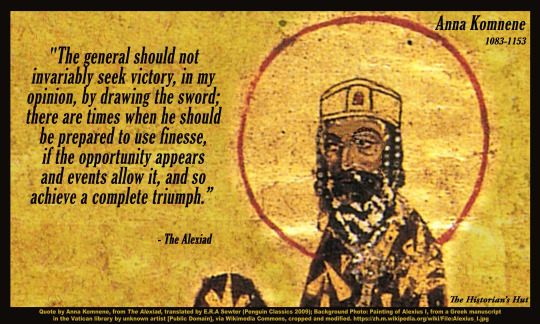




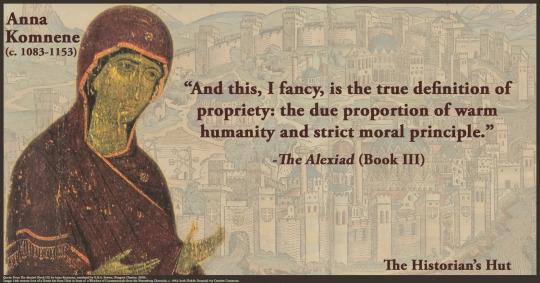

Ah I had written before about that stuff and I meant to write something short this time but I just can’t do it when it’s about Byzantium my love adefefajdhhajhf
#history#byzantine empire#eastern roman empire#women#byzantine history#byzantine culture#east roman empire#byzantine greek culture#greek history#greek culture#middle ages#women in history#anna komnene#anna komnene porphyrogennite#anna comnena#attichoney4u#ask#long post#tw long
70 notes
·
View notes
Text
Tonantzin Guadalupe 🌵🌹
The original \/u| \//\ goddess I created in 2013 is Maria Rosa. Her design was inspired in major part between the miracle of La Virgen de Guadalupe and the concept of Mary Queen of Heaven.
I was recently commissioned to create a new (\/) Goddess inspired similarly between Guadalupe and Tonantzin by my chingona hermana Janet Bella Rosa who also knew Mi padrino Antonio 🙏 I felt his spirit guiding me to connect our visions! 💞
Tonantzin is an enduring Nahuatl title for the maternal aspect of any Aztec goddess, much like “Our Lady”, rather than the name of a particular goddess. I chose a blue background to parallel Her starry mantle of heaven and also represent Lake Texcoco since the eagle, snake, and cactus from its story of the founding of ancient Mexico there are present. 💙🌵
Tonantzin in various forms is frequently depicted with eagle feet so I thought it appropriate to have the legendary golden eagle clutch the silvery moon below Her in place of Guadalupe’s cherub 🦅 🌙 Tonantzin is often known, by many names, to wear a skirt of snakes- the celestial Aztec earth mother Coatlicue’s particular name translates to “She of Snake Skirts”. So I couldn’t help but see the snake emerge from the opening in Her folds here. Frequently in Aztec art snakes emerging from or replacing body parts represents blood so I feel a menstrual element from how the snake manifested in this vision 🐍 🩸
Many believe that the apparition of La Virgen de Guadalupe on Tepeyac Hill unto St. Juan Diego, an Indigenous peasant originally named Cuauhtlatoatzin meaning “Talking Eagle”, was a vision of a new form of Tonantzin. Her local temple had formerly been on that very site, destroyed by conquistadors. When Cuauhtlatoatzin received these holy visions, the Goddess spoke to him not in Spanish but in his native Nahuatl language even though She identified Herself as The Virgin Mother of God. Even the Church documents testify that The Holy Mother assured him in his moment of doubt, in his Indigenous tongue, “Am I not here who am your Mother?” Indeed Tonantzin Coatlicue herself is said to have had her own divine conception via a feather 🪶
The miraculous vision of Guadalupe that appeared upon Juan Diego/Talking Eagle’s tilma is often seen as a self portrait by Her and there are many analyses of the visual element’s encoding of Aztec symbolism. I took these theories and insights into consideration while creating this vision.
Even within the suppression of Spanish colonization ancient indigenous Mexican Curanderismo healing practices were able to persevere and often in the name of La Virgen de Guadalupe, under the protection of Her image.
🌟🌟🌟🌟🌟🌟🌟
“At home, on the evening of December 12th we may light a candle and place offerings of flowers, copal and chocolate in front of her statue or painting. In the public square, those who follow the Mexica spiritual tradition will join brothers and sisters for an all-night vigil of prayer, Danza, offerings, and songs to her, who is Tonantzin Tlalli Coatlicue, who was always honored at the hill of Tepeyac. As we salute the Four Winds and dance in the ceremonial circle, we honor those who have gone before us, the courageous people who kept traditions alive through the centuries despite the threat to their life if discovered. The feathers in the copilli, the ceremonial headdress worn by the dancers, will draw down the energy of the cosmos into Mother Earth, our beautiful Tonantzin Tlalli Coatlicue to help her heal from the many ways she is dishonored.
Nearby, children will play and laugh, faces smeared with the traces of candy and the cinnamon of churros, the delicious deep fried pastry covered with sugar and cinnamon while the sound of mariachi music adds to the feeling of a fusion of cultures and beliefs. If you wander the crowded street you will see a handful of Catholic pilgrims on their knees on the hard pavement slowly make their way to the entrance of the church in gratitude for answered prayers.
And, in spite of quiet official church disapproval, the local parish priest will invite Indigenous ceremonial dancers to participate during the special December 11-12 mass for Our Lady of Guadalupe. Inside the church, for a few moments, Mayan copal will blend with European frankincense, quetzal feathers will dance on the air, and elders with bundles of aromatic rosemary plants will cleanse the People’s spirit. The two cultures, reconciled at this moment, acknowledge their bond of love for the Woman Who is Cloaked with the Sun; a bridge of Light between peoples.”
Maestra Grace via Curanderismo.org
#curanderismo#tonantzin#virgen de guadalupe#holy mother of god#mother goddess#goddess art#brujeria#marian devotion#folk catholicism#folk traditions#ancient origins#Aztec
33 notes
·
View notes
Note
Just saw your chapter titles on instagram. LOVE. Which was the easiest to name? Which was the most difficult? Do you have a favorite? Does it coincide with your favorite chapter?
thank god someone finally asked me about the chapter titles, i’m erecting the Church of Our Lady She Gets It in your honor as soon as i’m done talking A Lot about this


easiest:
(8) “anatomy of a porn title” came to me before i even had the concept of this book. milo’s experiences working at the store are almost 100% my own, and one of my most memorable days was when i had to process 200+ dvds (this involved a lot of scanning, stickers, and organization). so i’d had this one in my back pocket for a while.
when i finally had a grasp on the story i wanted to tell around my personal sex shop chronicles, (1) “a crisis of sexual identity” was the easy-breeziest chapter title, because it captured the Point i wanted to make.
writing a demisexual romance, even being demi myself, is… not super easy? especially because i wanted to play with the idea of love at first sight, which is so often conflated with lust, and that just doesn’t work the same when you’re on the asexual spectrum.
so much of this book is about being queer and how our labels, however liberating, can also be suffocating, because—particularly in the age of social media expectations—we become so preoccupied with being queer The Right Way. and there is no goddamn Right Way, but we’re pressured into these kinds of performances, and then before you know it your priority is appeasing some dickweed on the internet who says m/f relationships can’t be queer, instead of your own happiness.
so, we start with milo’s crisis and we follow him through the journey of realizing that, hey, actually, this ain’t so bad.
hardest:
(4) “sick of dating apps, just gonna pygmalion myself a boyfriend” and (9) “the epic highs and lows of grocery store music” both went through several iterations, none of which i can remember now because mostly they were Fine, but they just didn’t pop.
when i landed on (4)’s, honestly i was a little miffed at myself for taking so long because that’s a phrase i made up and use a lot, so i should’ve had the chapter title from the get-go.
stevie’s story starts off with agitation with her dating app experience, which she worries is coloring her first impression of milo because he was nice to her and easy to talk to in ways that app matches aren’t—and then, BAM, he shows up to the bar where she’s sitting there thinking about him and proves her first impression right, as if she manifested him into existence.
now if only i could do the same thing for myself… that’s the dream, babyyyy.
favorite title vs favorite chapter:
i think both have to be (5) “how many degrees of separation are there between kevin bacon and your love life?”
there are several sociological concepts that have stuck with me since college (probably because the head of the department, who was the best dude but also the most notoriously ruthless grader, wanted me to major in soc, and i’m a sucker for a compliment). “six degrees of separation”—the idea that every person is connected to every person through no more than six other people—has a celebrity counterpart, “six degrees of kevin bacon,” which posits that you can trace every actor to kevin bacon.
i am a little bit obsessed with this, because the separation/kevin bacon rhyme alone is so deliciously SERENDIPITOUS, it blows my mind.
for milo and stevie, (5) is the moment where they realize the friends they’ve had in common for ~2 years, and it’s really only been timing that’s kept them from meeting until now (and the timing was a little tricky for me to sort out, too, but i’m happy with how i got there).
sometimes you just keep missing people until it’s Meant for you to run into each other, and i think there’s something deeply romantic about those prior missed connections. there’s a sense of “i could have been loving you longer, but maybe, this way, i get to love you better.”
and, even though milo doesn’t Love stevie yet at this point in the story, his pov in this chapter is circling this conclusion.
thank you SO MUCH for this ask, may love and light bless you for all time, forever and ever and etc. amen 💞✨
(if you’ve happened across this little ditty and want to know more about what’s your vibe?, here’s a link!)
#book tag: wyv#ask#authors on tumblr#indie author#chapter titles#writeblr#romance books#comedy books#queer author#queer romcom#queer romance#demisexual#asexual spectrum
18 notes
·
View notes
Photo

Our Lady of Lourdes
Feast Day: February 11
Patron saint of bodily ills
On February 11th, 1858 Our Lady appeared to St. Bernadette in the cave of Massabielle, Lourdes, France. This began a series of apparitions. During the vision on the 25th of March she told Bernadette, “I am the Immaculate Conception.” Lourdes is one of the most frequented Marian Shrines in the world. It is known as a place of healing, with over 60 miraculous cures that have been recognized by church authorities.
{website}
101 notes
·
View notes
Text
SAINT OF THE DAY (December 9)

On December 9, Roman Catholics celebrate St. Juan Diego, the indigenous Mexican Catholic convert whose encounter with the Virgin Mary began the Church's devotion to Our Lady of Guadalupe.
In 1474, 50 years before receiving the name Juan Diego at his baptism, a boy named Cuauhtlatoatzin — “singing eagle” — was born in the Anahuac Valley of present-day Mexico.
Though raised according to the Aztec pagan religion and culture, he showed an unusual and mystical sense of life even before hearing the Gospel from Franciscan missionaries.
In 1524, Cuauhtlatoatzin and his wife converted and entered the Catholic Church.
The farmer now known as Juan Diego was committed to his faith, often walking long distances to receive religious instruction.
In December 1531, he would be the recipient of a world-changing miracle.
On December 9, Juan Diego was hurrying to Mass to celebrate the Feast of the Immaculate Conception.
However, the woman he was heading to church to celebrate came to him instead.
In the native Aztec dialect, the radiant woman announced herself as the “ever-perfect holy Mary, who has the honor to be the mother of the true God.”
“I am your compassionate Mother, yours and that of all the people that live together in this land,” she continued, “and also of all the other various lineages of men.”
She asked Juan Diego to make a request of the local bishop.
“I want very much that they build my sacred little house here” — a house dedicated to her son Jesus Christ, on the site of a former pagan temple, that would “show him to all Mexicans and exalt him throughout the world."
She was asking a great deal of a native farmer. Not surprisingly, his bold request met with skepticism from Bishop Juan de Zumárraga.
But Juan Diego said he would produce proof of the apparition, after he finished tending to his uncle whose death seemed imminent.
Making his way to church on December 12 to summon a priest for his uncle, Juan Diego again encountered the Blessed Virgin.
She promised to cure his uncle and give him a sign to display for the bishop.
On the hill where they had first met, he would find roses and other flowers, though it was winter.
Doing as she asked, he found the flowers and brought them back to her.
The Virgin Mary then placed the flowers inside his tilma, the traditional cloak-like garment he had been wearing.
She told him not to unwrap the tilma containing the flowers until he had reached the bishop.
When he did, Bishop Zumárraga had his own encounter with Our Lady of Guadalupe – through the image of her that he found miraculously imprinted on the flower-filled tilma.
The Mexico City basilica that now houses the tilma has become, by some estimates, the world's most-visited Catholic shrine.
The miracle that brought the Gospel to millions of Mexicans also served to deepen Juan Diego's own spiritual life.
For many years after the experience, he lived a solitary life of prayer and work in a hermitage near the church where the image was first displayed.
Pilgrims had already begun flocking to the site by the time he died on 9 December 1548, the 17th anniversary of the first apparition.
Pope John Paul II beatified him on 6 May 1990 and canonized on 31 July 2002.
He is the first Catholic saint indigenous to the Americas.

16 notes
·
View notes